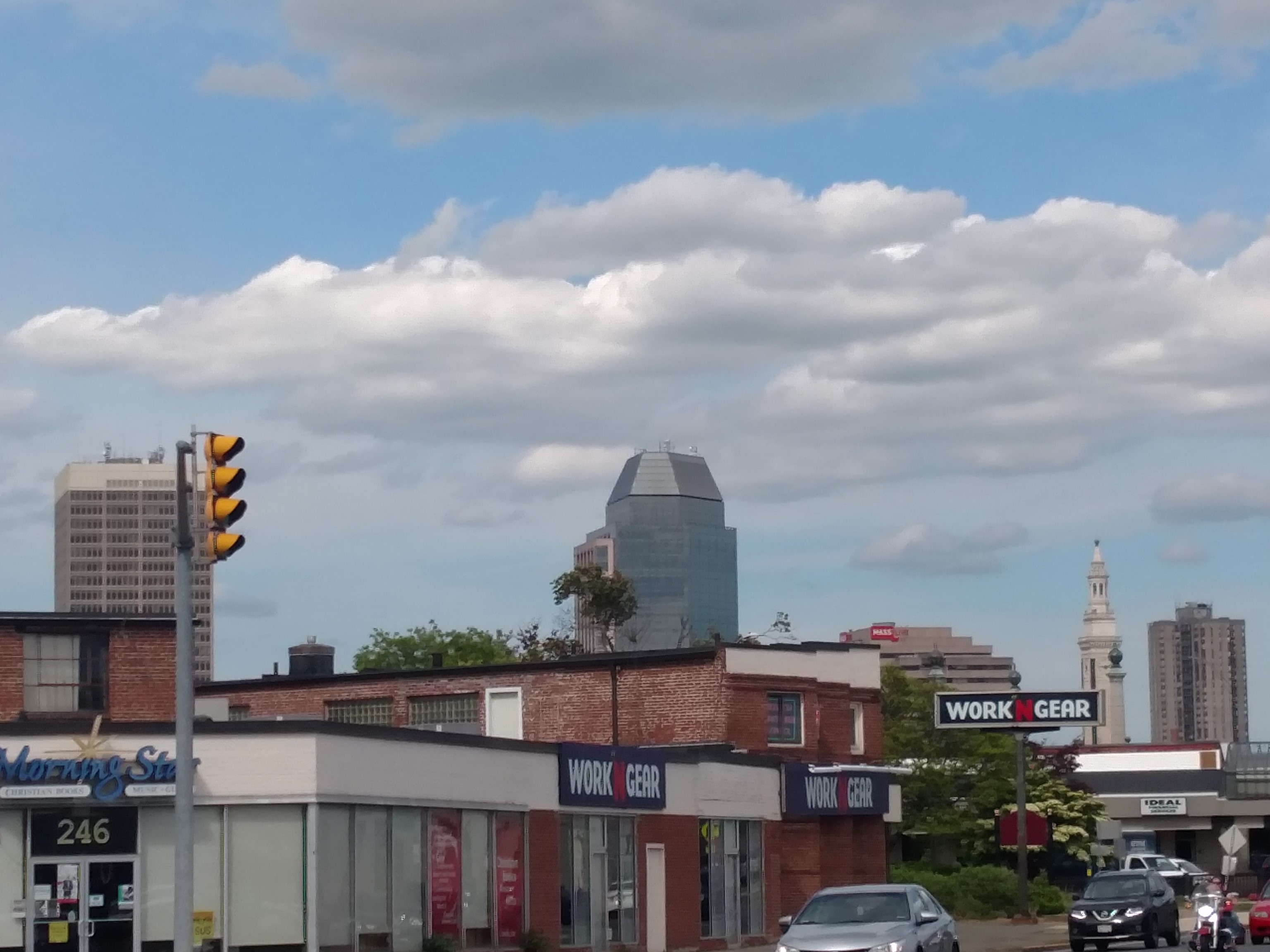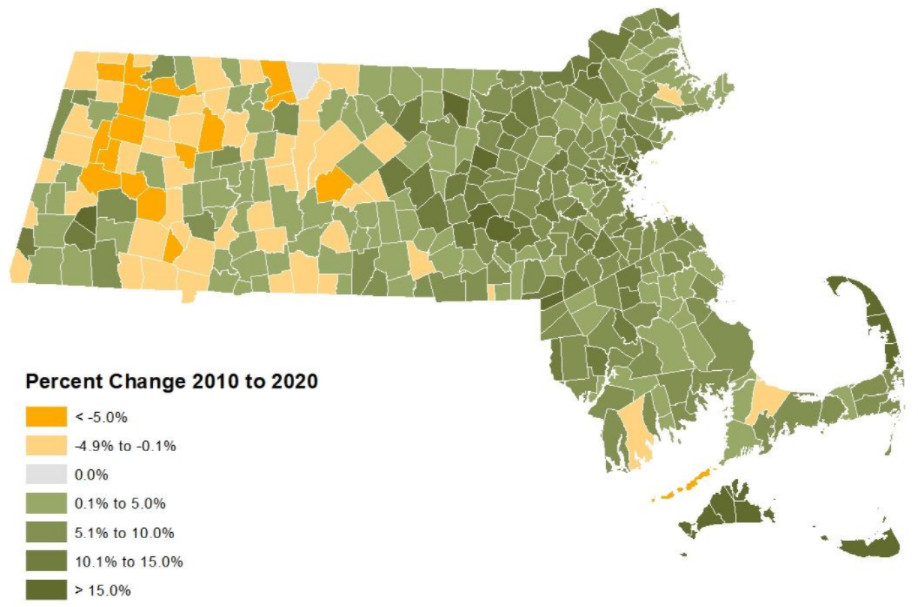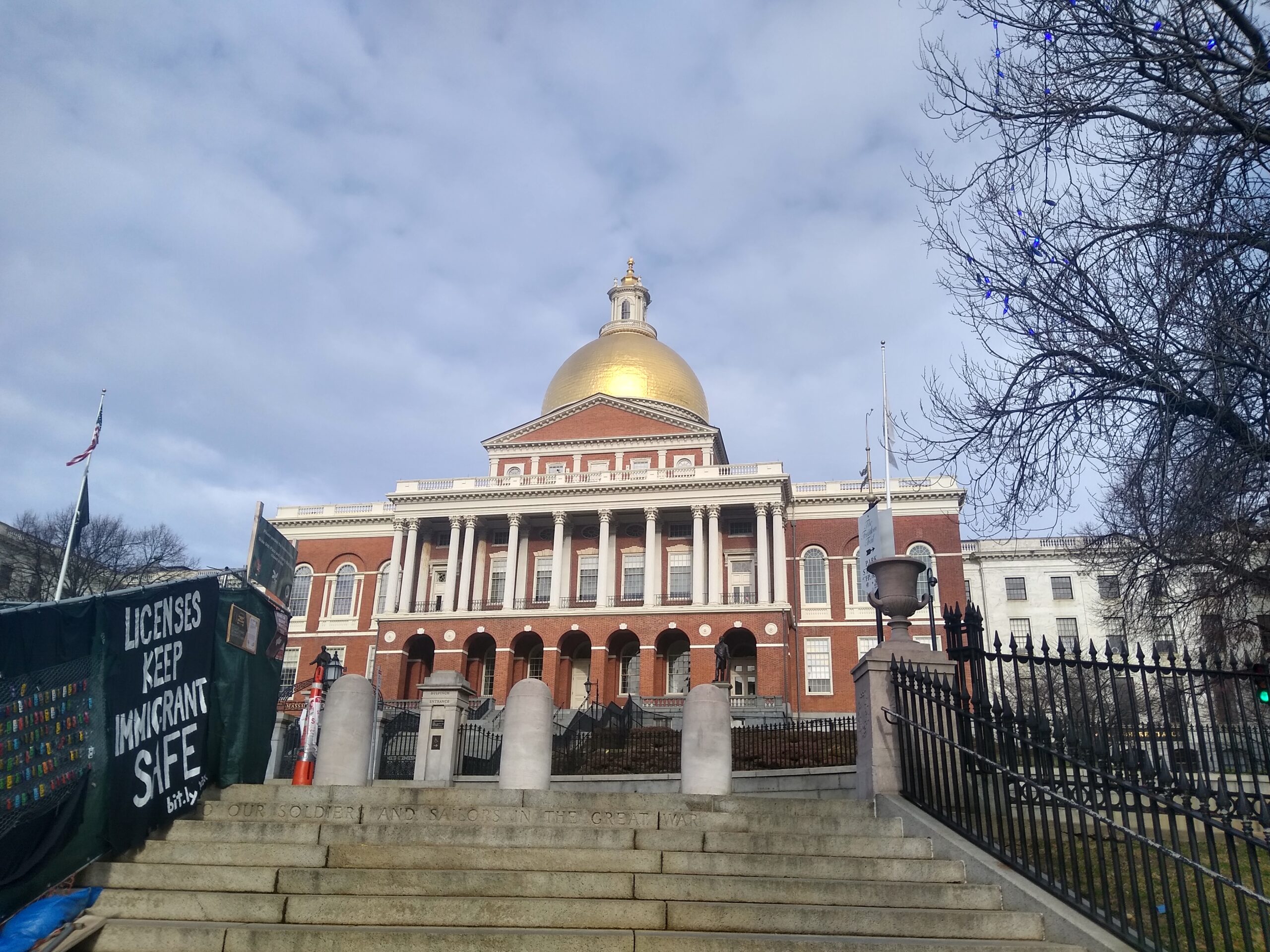Census Bureau Renders Its Judgment upon Western Mass…
Springfield bucked a local trend as its population grew a clip faster than much of the region. The Census Bureau released community-level data Thursday confirming the commonwealth’s growth principally happened in its east. Yet, the information still included some surprises. These both benefited and hurt Bay State localities reflecting both longer-term trends and how the coronavirus possibly warped results.
The relative strength of Massachusetts’s third city could prove essential as redistricting pulls political weight eastward. Boston and Worcester both experienced substantial growth, with the latter breaking its population record. Cities across the commonwealth showed some strength as did beachy places that had been in decline. It was a hopeful trend urban centers from Chicago to Philadelphia to Newark, New Jersey experienced.
“Districts must be redrawn after each federal census to ensure they are of equal size, so that each citizen’s vote carries the same weight,” Secretary of the Commonwealth Bill Galvin’s office said in a statement. The release highlighted the huge growth in the commonwealth’s northeast means districts there will grow. Districts in Central and Western Massachusetts, growing much slower, must grow.
Galvin’s office oversees the state’s Census efforts and runs elections. The legislature draws the maps.
Still representing about a third of Hampden County overall, Springfield was the only traditional, pre-war Hampden County city to meaningfully grow last decade.
Growing 1.9% or 2929 people, Springfield recorded a population of 155,929. Since peaking in 1960, the city has only grew faster in 1990 at 3.1%. Its 2020 growth alone kept Hampden County positive, rising 2335 to 465,825 people. Most communities in the immediate Springfield area experienced growth or were flat.
The county’s other traditional, pre-war cities did not so well. Respectively, Holyoke and Westfield shrank to 38,238 and 40,834. Holyoke’s 1642-person decline—the largest raw count drop in the state—mirrors other shrinking ex-industrial cities in the 413. Westfield had until this decade looked like Hampden County growth potential. The pandemic may have upended that when college students left before the census could finish.
Elsewhere in the county the news was mixed. Chicopee was essentially flat up half a percent at 55298. Agawam, East Longmeadow, Palmer and West Springfield are legally cities, but urbanized differently from pre-war cities. They enjoyed very modest growth. Among towns in the immediate Springfield area, Hampden and Ludlow shrank. Some, like Longmeadow, barely moved.
Outside Hampden County, the differences become stark. Berkshire and Franklin counties suffered population declines of 2193 and 343 respectively to land at 129,126 and 71,029. In Berkshire County, only the artsier southern towns grew while areas like Pittsfield, North Adams and their environs saw declines, steeply in some communities. Franklin County’s losses were in small towns while county seat Greenfield posted modest gains.
Hampshire County saw nearly 3% growth rising 4228 to 162,308 people. That was driven by healthier growth in Amherst, Belchertown and Northampton in excess of 3%. Easthampton, growing only 1%, was less of a driver despite a decade-plus economic boom.
Despite beating some demographic odds in Springfield and Hampshire county, local growth rates pale in comparison to the state’s overall 7.4% pace. Northerly Boston neighbor Revere was the fastest-growing large community, which Galvin’s office measures at any in excess of 50,000 people. Reverse saw 20% growth or 10,431 people since 2010, rising to 62,186 people. Second place Lawrence posted nearly 18% growth or 12,766 to a population of 89,143.
While Revere broke a historical record, too, the bronze for large community growth deserves particular note. Worcester exploded by 25,473 people or 14% becoming New England’s second city with more than 200,000 people. At 206,518, the Woo nosed past its mid-20th century peak of nearly 204k.
Like Springfield, Worcester has mitigated the worst of decline with stronger perimeter neighborhoods. Continued improvements to commuter rail service between the Heart of the Commonwealth and the Hub of the Universe have unleashed a boom. Longmeadow Senator Eric Lesser, who has pushed for similar service improvements to Springfield, noted this shortly after the census figures came out.
Anyone doubting the power of transportation and housing investment, look at Worcester. After decades of decline, the city saw MASSIVE 14% population growth since 2010, breaking its record set in 1950. Imagine if we had rail connecting all our Gateway Cities.
— Eric Lesser (@EricLesser) August 12, 2021
This pattern repeated in southern New England. Providence—once larger than Worcester—and Stamford, both on busy rail lines, posted solid numbers. Other big Connecticut cities grew more at Springfield’s pace, save dwindling Hartford.
Gateway cities throughout the Eastern part of the state saw growth, even those with somewhat more in common with Springfield. In 2010, Massachusetts had 5 cities—Boston, Worcester, Springfield, Lowell and Cambridge—with more than 100,000 people. In 2020, Brockton, Quincy, Lynn and New Bedford joined them. Fall River was not far behind. Brockton and Quincy broke records.
City growth surprised across the nation. Hurting cities like Baltimore and Detroit still faded, but even long-suffering Chicago saw growth. The Windy City defied expectations, posting only its second positive census since 1950. Philadelphia ceded fifth place nationally to Phoenix, but the City of Brotherly Love grew by half a Springfield with best gains since the Truman Administration. Newark, New Jersey held on as the Garden State’s biggest city even as Jersey City exploded with immigrants and refugees fleeing New York real estate prices.
One takeaway is cities of all stripes gained this census. This is despite estimates that were apparently undercounting in urban centers. For every tech hub gaining 100,000 people, there was growth in less-talked-about places. As in Jersey City’s case, these communities had newcomers from inside the country and abroad to thank.
Good news notwithstanding, there were some oddities the pandemic may have caused. Hampden County’s stabilization could be because 20-somethings went home to Longmeadow or Wilbraham to work remotely rather than drop a ton of cash for a Boston or New York rental. (New York did fine, adding over 600,000 people last decade). Cape Cod and the Islands practically boomed, defying years of hand-wringing about the year-round population decline.
Teeny Aquinnah on Martha’s Vineyard was the commonwealth’s fastest growing community with a massive 128-person—not a typo—or 41% increase to 439. Number 2 was Nantucket which grew 40% to 14,255. Before reaching Revere—which was 13th for growth among all Massachusetts municipalities—the rankings trudge through resort towns in Barnstable and Berkshire counties. It will take time to parse through the data, but summer-homeowners may have shifted permanently thanks to WFH.

Aquinnah Town Hall: Everything must GROW! (via wikipedia)
The pandemic may have cost some cities, too. The Census is supposed to reflect the population as of April 1, 2020—right in the middle of the pandemic. Therefore, passing on a move to the big city—or unemployment—while quarantining represents a true shift. It is more complicated for colleges. Students fleeing the coronavirus were making a more explicitly impermanent move. Clearly some towns took action to record those student numbers that changed literally weeks before April 1. Other may not have.
All decade, Boston looked destined to join Denver and Seattle in the 700K club, but missed it by 25,000 people. While still posting over 9% growth, Boston came out of the 2020 census with 675,647 people. If students at mega-universities like Boston University or Northeastern did not make the cut, it may cost capital city a state rep seat.
Nevertheless, Boston will do fine even as pressure grows on Western Massachusetts. Congressional districts in the East will need extensive retooling. The districts of House Reps James McGovern and Richard Neal, who represent Western and Central Massachusetts, shall only need tinkering.
Yet, the 413’s Beacon Hill districts could prove the most devilish to redraw.
Roughly speaking, the four western counties have 21 House seats and six senate districts. This includes Spencer Senator Anne Gobi, whose district includes the eastern fringes of the 413.
While slower than the whole state, Greater Springfield and Hampshire County held their own, the Berkshires and their foothills did not. The region could end up losing a House seat entirely. While painful, it could be excised relatively easily.
The more fraught question is the Senate. A district like Lesser’s needs relatively few people to meet the new Senate. But districts of Pittsfield Senator Adam Hinds and Westfield Senator John Velis bled population. How to pack 175,000 people in, as each senate district must have, will not be easy.
The issue implicates Springfield, too. Because Springfield Senator Adam Gomez holds a minority-majority district, keeping it intact is a priority for mapmakers. Senate Redistricting chair William Brownsberger is reportedly considering handing the whole city to Gomez. Lesser, who currently represents a third of the city, would have to find the population elsewhere. That would cut West Springfield loose from Gomez to make Velis whole.
However, that becomes an equity issue, too. The third-largest city in the state, which is minority-majority and a rare if modest growth area, would only have half as many voice in the upper house of Beacon Hill.


